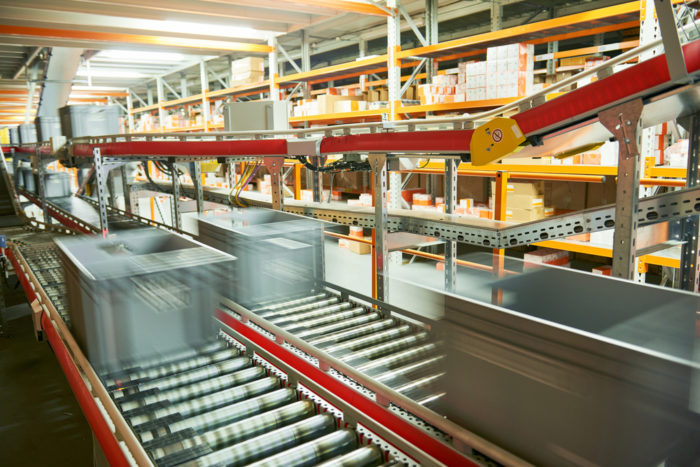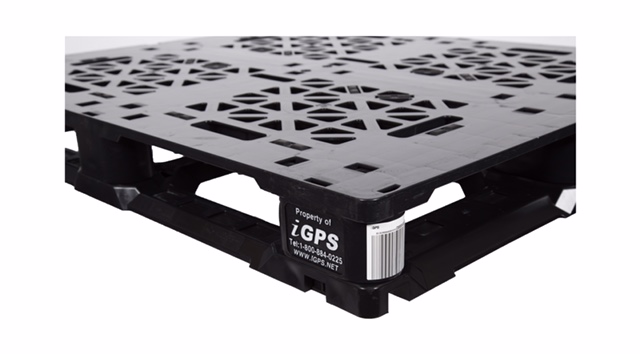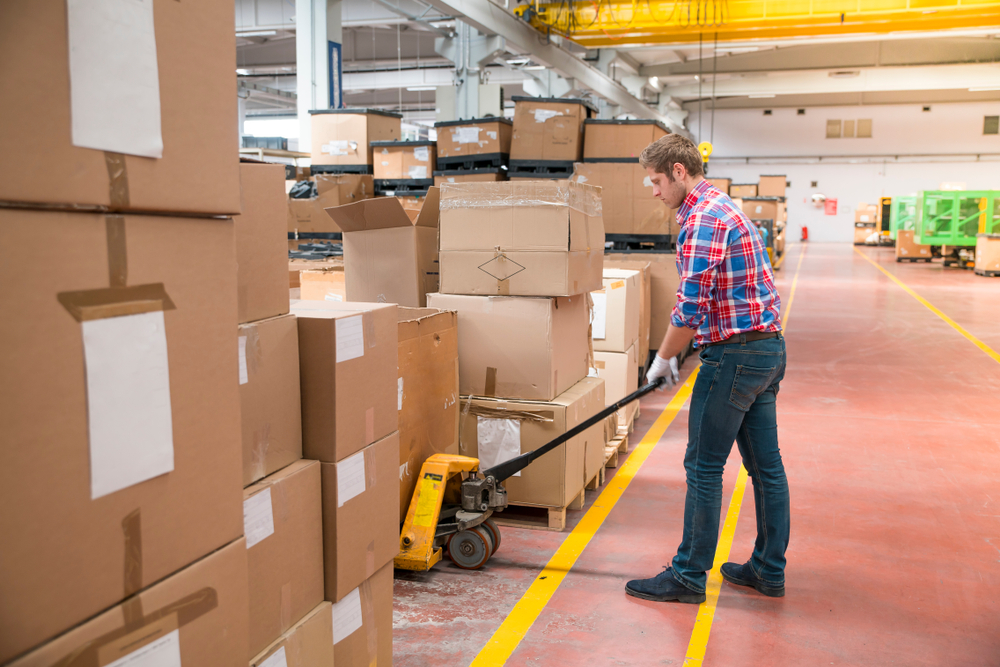In most warehouses, a significant portion of operations depends on manual labor. Even a single human error in the warehouse can impact the profitability of a business and can lead to serious and even fatal injuries. A survey report by the U.S. Bureau of Labor Statistics ranks transportation and warehousing among the five private sectors with the highest incidence of nonfatal occupational injuries and illnesses.
Apart from compromising the safety of workers, instances of human error in the warehouse may cause expensive damage to machinery and products and may result in retailer rejections or recalls. Eventually, this can result in an overall increase in a company’s total cost of business (TCOB). To cut down operating costs in the supply chain while ensuring workplace safety, businesses are increasingly emphasizing ways to minimize human involvement in warehouses.
How to Reduce the Likelihood of Human Error in the Warehouse
 Warehouse operations involving perishable food products and temperature-sensitive pharmaceutical products need continuous monitoring to ensure that the products are safe for consumption when they reach the end-customer. While employees are trained to follow warehouse maintenance guidelines and regularly monitor the condition of products, a single mistake in following these routine measures can ruin an entire shipment and lead to expensive product recalls. The key to avoiding these issues lies in automating warehouse operations, such as through an Automated Storage and Retrieval System (ASRS).
Warehouse operations involving perishable food products and temperature-sensitive pharmaceutical products need continuous monitoring to ensure that the products are safe for consumption when they reach the end-customer. While employees are trained to follow warehouse maintenance guidelines and regularly monitor the condition of products, a single mistake in following these routine measures can ruin an entire shipment and lead to expensive product recalls. The key to avoiding these issues lies in automating warehouse operations, such as through an Automated Storage and Retrieval System (ASRS).
In an ASRS-equipped warehouse, the process of storing and handling goods can be completed in a shorter period of time.
Warehouse automation not only reduces the cost of human labor in warehouses but also increases the accuracy and efficiency of warehouse operations, reducing instances of error. Following are some of the benefits of automated systems over conventional warehouses relying on manual labor:
- Increased accuracy: Warehouse order-picking accuracy is crucial in maintaining correct inventory data. Organizing this data is time-consuming and an error could cause a ripple effect across the supply chain. A correctly programmed ASRS can prevent product mix-ups in storage or shipments.
- Greater efficiency: Time is of the essence, especially in cold chain logistics. An employee who misses the expiration date of a product load can spoil the entire load, leading to significant losses. Automated warehouse systems that work in conjunction with warehouse management software can provide real-time updates on shipments, making it easier to ensure they are shipped on a first-in, first-out (FIFO) basis.
- Higher productivity: In an ASRS-equipped warehouse, the process of storing and handling goods can be completed in a shorter period of time. Further, the system executes the programmed tasks without slowing down or taking any breaks, increasing the overall productivity of the warehouse.
- Increased safety: Tired or distracted workers are prone to making mistakes. When these mistakes occur while working with machinery, such as a forklift, the risk of an accident in the warehouse—as well as damage to products and equipment—becomes significantly greater. An ASRS greatly reduces these risks, leading to greater safety in the warehouse.
- Optimized utilization of floor space: Employees working with forklifts need plenty of floor space in order to operate the equipment. Using autonomous guided vehicles (AVGs) to move pallets along with high-density pallet racking with automated stacker cranes makes better use of both vertical space and floor space, maximizing the storage capacity in the warehouse.
Though an ASRS can improve efficiency and reduce instances of human error in the warehouse, companies are often still slow to introduce the technology to their facilities. This reluctance can be blamed on the high investment cost of an ASRS, along with the need for customization of the system’s programming.
It’s crucially important to use the right auxiliary equipment with an automated system.
Another expensive aspect of an ASRS is its maintenance. The system cannot recognize inconsistencies outside its programming, and this could include something as seemingly trivial as a protruding nail on the surface of a shipping pallet or a loose pallet board. Without identifying the problem, the equipment in an ASRS may keep running, which, in the case of a pallet failure, can lead to significant damage to both machines and products. This, in turn, can halt other operations in the warehouse as well, which makes it crucially important to use the right auxiliary equipment with an automated system. One of the best choices a warehouse can make to support their automated equipment is to switch to plastic shipping pallets.
Using Plastic Pallets to Ensure Minimal Human Involvement in Warehouses
 The wood block and stringer pallets most often used in warehouses and distribution centers frequently have loose boards or protruding nails that can damage machinery or cause the load to shift. Uneven load distribution may even cause a wood pallet to collapse under the weight of its product load, leading to spillage in the tracks and gears of an ASRS. Though shipping pallets should undergo a routine inspection, it can be difficult to pinpoint stray splinters or other small issues that might interfere with the workings of the machine and stall the entire system. The absorbent surface of wood pallets also poses a contamination risk as chemicals, bacteria, and mold on a pallet may move through the ASRS and spread contamination.
The wood block and stringer pallets most often used in warehouses and distribution centers frequently have loose boards or protruding nails that can damage machinery or cause the load to shift. Uneven load distribution may even cause a wood pallet to collapse under the weight of its product load, leading to spillage in the tracks and gears of an ASRS. Though shipping pallets should undergo a routine inspection, it can be difficult to pinpoint stray splinters or other small issues that might interfere with the workings of the machine and stall the entire system. The absorbent surface of wood pallets also poses a contamination risk as chemicals, bacteria, and mold on a pallet may move through the ASRS and spread contamination.
Plastic pallets complement automated warehouse systems far better than wood pallets do.
All of these issues can be addressed by switching to high-quality plastic pallets. Unlike wood pallets, plastic pallets have a unibody construction that reduces focused points of stress under the weight of products. Following are a few advantages of plastic pallets that can help smooth operations through an ASRS, ultimately reducing the warehouse’s dependence on manual labor and lowering instances of human error. Plastic pallets offer:
- Less wear-and-tear on equipment: Plastic pallets are up to 35 percent lighter than reusable wood block pallets. This reduces wear-and-tear on equipment and ensures minimal downtime.
- Minimal damage to products: With no stray splinters, protruding nails, or loose boards, there are fewer chances of products becoming damaged during handling in an automated system. The uniform weight of the pallet, along with a solid deck, keeps products from shifting during handling as they move through the system.
- Lower risk of contamination: An easy-to-clean, non-absorbent plastic surface helps prevent chemical and biological substances from contaminating product packaging or traveling across the warehouse.
- Real-time tracking of product loads: The superior durability of plastic pallets makes it possible to embed radio-frequency identification (RFID) chips in the pallet to track and trace product loads in real-time.
Because of these advantages, plastic pallets complement automated warehouse systems far better than wood pallets do. This means that facilities that switch to plastic pallets to support an automated system can reduce instances of human error in the warehouse while also minimizing causes of technical issues that lead to machine downtime. In the long run, this can significantly lower a company’s total cost of business (TCOB) and increase profit margins.
iGPS plastic pallets help reduce human error while saving time, labor, and operating costs. To learn more about how our plastic pallets can help optimize your warehouse operations, give our team a call at 1-800-884-0225, email a specialist at switch@igps.net, or visit our contact page.



